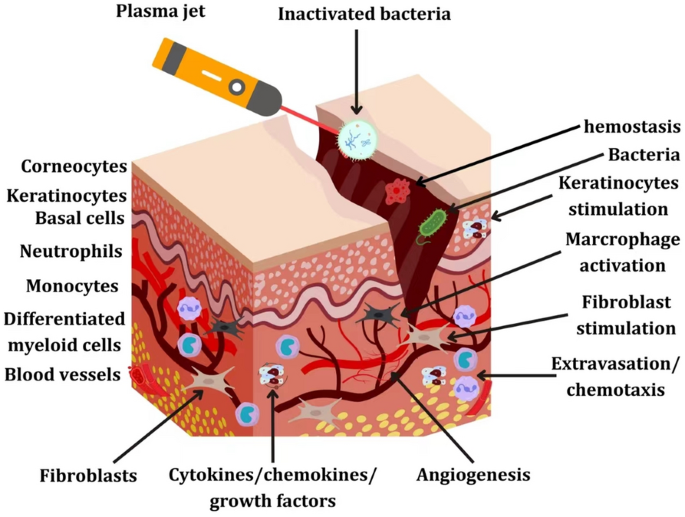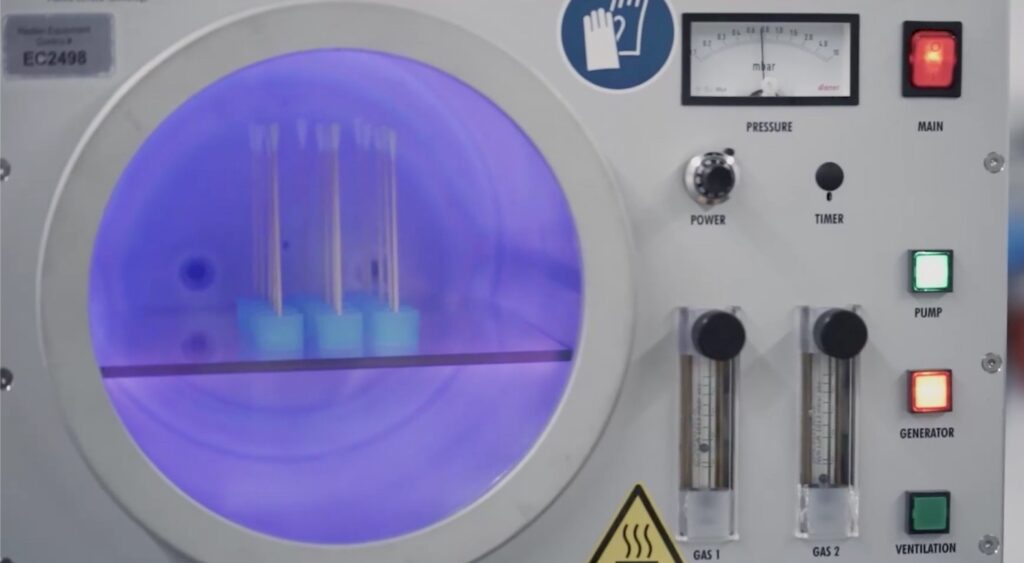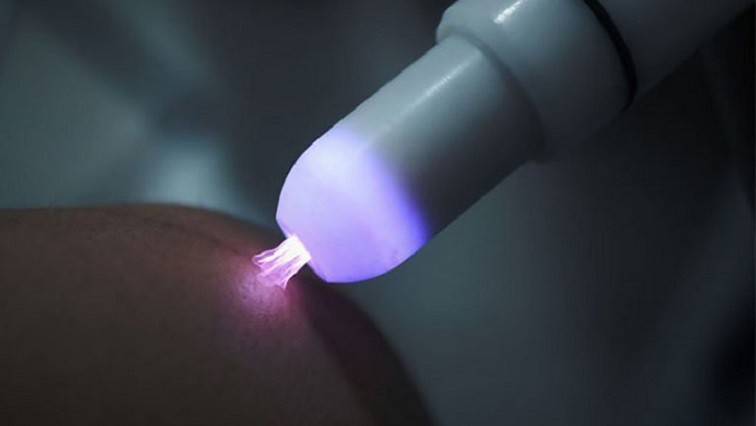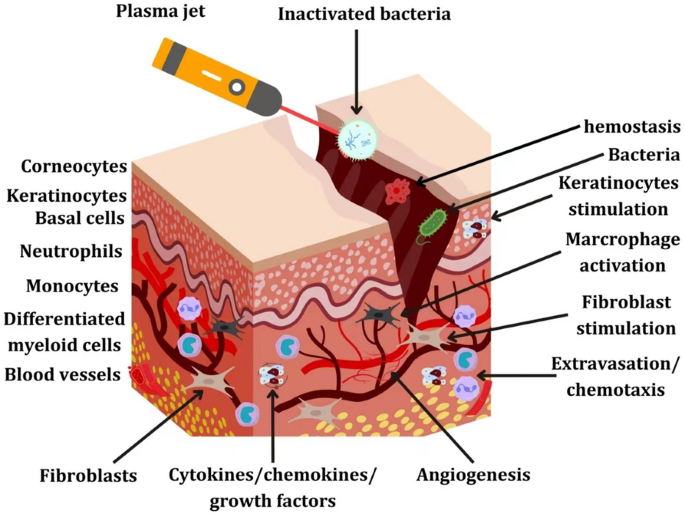These days, medical technology has risen so fast on the ladder of advancement, offering solutions that were unimaginable just a few decades back. One of the recent developments with relevance to gynecology is DBD plasma, commonly known as Dielectric Barrier Discharge plasma. Primarily, this is a non-invasive and non-thermal technology, offering applications for treatments requiring high precision and accuracy to ensure the safety of patients. With its advanced tool PlasmaHeal X4, this will also revolutionize labiaplasty, infection management, and tissue regeneration.
Cold atmospheric plasma attracts much attention because it is promising for working at room temperature and can target only the affected tissue without damage to a healthy one. This becomes particularly interesting for women’s health challenges: chronic infections, vaginal rejuvenation, among other things. Plasma medicine grows with applications; therefore, combining precision with versatility is probably one of the most attractive weapons in the future years.
The topics covered in this article involve the many applications of DBD plasma, such as antimicrobial effects, tissue effects, and the integration of DBD into instruments to prepare plasma-activated media. The step-by-step explanation will allow one to contemplate how this promising technology could shape the future of gynecological care.

What is DBD Plasma?
One variety of non-thermal plasma, generated with the help of dielectric barriers, is DBD plasma. This works at atmospheric pressure and produces highly controlled plasma discharge at room temperature, quite suitable for sensitive gynecological applications, unlike traditional heat-exchange methods.
How DBD Plasma Works
DBD plasma is generated by the application of high-voltage electrical pulses across a dielectric barrier. The plasma thus produced contains a variety of active species like oxygen and nitrogen ions that interact with biological tissues, thereby inducing several positive biological effects, including cell regeneration and antimicrobial activity.
Benefits of DBD Plasma in Gynecology
- Non-Invasive Treatment: Ideal for delicate areas requiring minimal trauma.
- Enhanced Safety: Reduced risk of tissue damage or scarring.
- Faster Recovery: Patients experience quicker healing with fewer complications.
Cold Atmospheric Plasma: A Game-Changing Technology
Cold atmospheric plasma is a subset of plasma technology that operates at room temperature, ensuring minimal discomfort for patients. Its applications in gynecology are vast, ranging from treating infections to rejuvenating tissues.
Why Cold Atmospheric Plasma is Unique
Unlike thermal methods, Cold atmospheric plasma does not rely on heat to achieve therapeutic effects. This makes it safer and more effective for procedures requiring precision.
Applications in Women’s Health
- Infection Management: Tackles resistant bacterial strains and fungal infections without harming healthy cells.
- Tissue Repair: Supports the regeneration of damaged tissues, promoting long-term health benefits.
PlasmaHeal X4: Revolutionizing Gynecological Treatments
One of the most advanced tools in Plasma medicine, the PlasmaHeal X4 device is transforming how gynecological conditions are managed. It is designed to deliver plasma therapy with unmatched precision, ensuring optimal outcomes for patients.
Features of PlasmaHeal X4
- Targeted Delivery: Focuses plasma energy exactly where it’s needed.
- Minimized Side Effects: Ensures patient safety and comfort during treatment.
- Versatile Use: Effective for both aesthetic and therapeutic purposes.
Applications in Gynecology
- Post-Surgical Care: Enhances healing and reduces complications after procedures like labiaplasty.
- Chronic Infections: Provides a reliable solution for treating persistent infections.

The Science of Plasma Medicine
Plasma medicine is an interdisciplinary field that combines the principles of plasma physics and biomedical engineering. It focuses on using plasma’s unique properties to achieve therapeutic effects.
How Plasma Medicine Works
Plasma contains reactive oxygen and nitrogen species (RONS) that interact with biological tissues. These species promote cell signaling, wound healing, and antimicrobial activity.
Advantages of Plasma Medicine in Gynecology
- Comprehensive Care: Addresses both therapeutic and aesthetic concerns.
- Enhanced Sterility: Its antimicrobial effects create a safer environment for procedures.
- Non-Invasive Approach: Reduces the need for conventional surgeries.
Labiaplasty: Improving Outcomes with Plasma Therapy
Labiaplasty, a common procedure for modifying the labia, often requires precise post-operative care. DBD plasma accelerates healing, reduces scarring, and minimizes complications, providing enhanced results.
Vaginal Rejuvenation: A Non-Invasive Solution
By stimulating collagen production and tissue repair, Cold atmospheric plasma offers a non-surgical alternative for vaginal rejuvenation. This treatment restores elasticity and improves functionality, enhancing patients’ quality of life.
Chronic Infection Management
Persistent infections, such as bacterial vaginosis, are notoriously difficult to treat. The antimicrobial effects of DBD plasma effectively disrupt microbial biofilms, ensuring long-term relief.
Wound Healing and Tissue Regeneration
The ability of non-thermal plasma to stimulate cell regeneration makes it invaluable for wound healing. It accelerates recovery and ensures better tissue integration, particularly after surgical procedures.
Plasma-Activated Media: The Next Frontier
Plasma-activated media (PAM) is a liquid infused with the therapeutic properties of plasma. It represents a breakthrough in personalized medicine, offering tailored solutions for various gynecological conditions.
How Plasma-Activated Media Works
PAM combines plasma-generated reactive species with a liquid medium, enhancing its ability to penetrate tissues. This allows for deeper therapeutic effects, particularly in areas that are difficult to reach.
Applications of PAM in Women’s Health
- Infection Treatment: Targets resistant pathogens with precision.
- Enhanced Drug Delivery: Improves the efficacy of medications by facilitating their absorption.
Non-Thermal Plasma: Precision Without Compromise
One of the most significant advantages of non-thermal plasma is its ability to deliver targeted treatment without causing thermal damage to tissues. This quality makes it ideal for sensitive areas, particularly in gynecology.
Key Features of Non-Thermal Plasma
- Selective Action: Targets only affected areas, preserving healthy tissues.
- Safe for Delicate Tissues: Reduces the risk of burns or scars.
- Versatile Applications: Suitable for both therapeutic and aesthetic procedures.
Impact on Tissue Effects
- Collagen Stimulation: Promotes natural tissue regeneration.
- Improved Elasticity: Enhances the functionality of vaginal tissues.
Antimicrobial Effects: A Vital Advantage
The antimicrobial effects of plasma are one of its most valuable attributes in gynecology. By generating reactive species, plasma effectively neutralizes harmful microorganisms, ensuring a sterile environment.
Benefits in Gynecology
- Reduced Infection Risks: Essential for post-surgical recovery.
- Effective Against Drug-Resistant Strains: Tackles pathogens that are immune to conventional antibiotics.
Advancing Women’s Health with Plasma Technology
The integration of DBD plasma and related technologies into gynecology has had a profound impact on women’s health. From addressing chronic infections to supporting tissue regeneration, plasma offers a holistic approach to care.
Key Benefits for Women
- Improved Patient Outcomes: Faster recovery and fewer complications.
- Non-Invasive Options: Expands access to treatments that were previously limited to surgical methods.
- Enhanced Quality of Life: Restores confidence and comfort for patients.
The Role of Plasma in Reducing Post-Operative Complications
Of all the post-operative complications, infection and poor healing are the major issues that always concern a gynecologist. Now, DBD plasma, or Cold atmospheric plasma has emerged as a magic wand that efficiently combats these issues.
Mechanism of Action-How Plasma Decreases Post-Operative Complications
Sterilization: Antimicrobial activity of plasma ensures the site to be infection-free.
Healing: Due to the enhancement of cell regeneration, surgical wounds heal faster.
Scarring is Reduced: Non-thermal plasma reduces the occurrence of scars because it minimizes inflammation and allows for healthy tissue building.
Example:
The application of DBD plasma in procedures such as labiaplasty has demonstrated an acceleration in the recovery process, enhancing tissue repair while reducing complications. Patients experience reduced discomfort and faster healing compared to traditional methods of post-operative care.
Comprehensive Table of Plasma Applications
| Application | Technology Used | Benefits |
| Labiaplasty | PlasmaHeal X4 | Accelerated healing, minimal scarring |
| Vaginal Rejuvenation | Cold atmospheric plasma | Enhanced tissue regeneration |
| Infection Treatment | Plasma-activated media | Antimicrobial effects, reduced recurrence |
| Wound Healing | DBD plasma | Faster recovery, improved comfort |
| Tissue Regeneration | Non-thermal plasma | Collagen stimulation, long-term benefits |
Why Plasma Technology is the Future of Gynecology
The adoption of plasma technology, particularly DBD plasma and Cold atmospheric plasma, is transforming gynecological care. Its ability to address complex challenges with precision and safety ensures better outcomes for patients.
How Plasma Improves Gynecological Practices
- Non-Invasive Treatments: Reduces patient discomfort and recovery times.
- Advanced Tools: Devices like PlasmaHeal X4 enhance the precision and effectiveness of treatments.
- Wide Range of Applications: From infection management to tissue rejuvenation, plasma offers versatile solutions.
Current Research in Gynecology about Emerging Plasma-Activated Water
Presently, ongoing research is also continuing the study on media-activated plasma, including water, for gynecological purposes. It is a breakthrough technology wherein the effective antimicrobial potentiality of plasma has been combined with water for an effective treatment methodology with safety.
- Non-Toxic Disinfection: Effective microbial control without the use of harsh chemicals.
- Delicate Regions Treatment: This approach treats infections of the most tender parts like the vagina.
- Treatment of Long-standing Infections: The system applies to chronic bacterial diseases such as bacterial vaginosis.
Gynecological Usage
- Vaginal Cleansers: Plasma-generated water-dispensing gadgets are being developed for light and effective cleansing and infection control.
- Treatment of Infections: Plasma-activated water acts against drug-resistant pathogens, therefore, it is very effective for fighting resistant infections.
The following developments also demonstrate that Plasma medicine may change routine conceptions in gynecology and provide innovative and patient-friendly solutions for a series of conditions.

Conclusion
This makes the appearance of DBD plasma and its application in gynecology a real new word in medical technology. Starting from its antimicrobial action up to the stimulation of tissue regeneration, plasma technology opened a new frontier in women’s health.
With the help of non-invasive, super-effective tools such as the PlasmaHeal X4, among others, and innovations like plasma-activated media, these are conditions that can be improved with everything from infections to aesthetic wound healing. Whether aiding in post-labioplasty recovery or rejuvenating the tissues of the vagina, its benefits are immense and manifold.
While Plasma medicine is still an up-and-coming field, its applications are being continuously researched and expanded. Plasma technology in gynecology thus holds the future. For more advanced solutions and personalized care, visit zylmedical.com and explore how plasma is rewriting the rules in women’s health.

